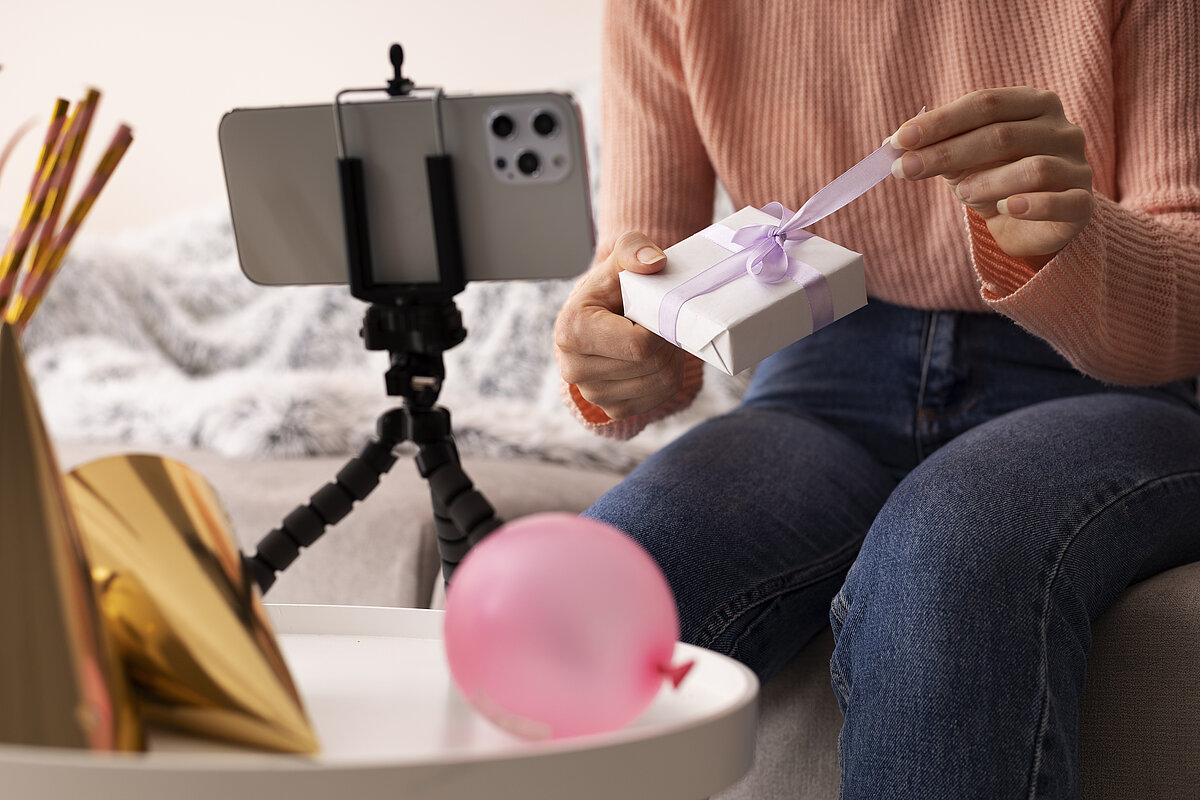
Influencer Elīna Didrihsone shared her excitement on the social media platform “Instagram” about a restaurant visit gifted to her by the owner. At first glance, this might seem like a typical influencer collaboration, where they often promote products and services in exchange for payment or barter deals. However, this time the story is different – in Latvia, influencers have started publishing their own wish lists on the platform Timetowish.com, allowing anyone to fulfill one of their wishes. For example, Didrihsone’s list reveals her fondness for sweets – it includes a cake and peanut butter, as well as sports shoes and a Davi Bianca bicycle.
“Wish lists create opportunities not only for influencers but also for brands seeking new and personalized ways to reach their audiences,” emphasizes the FESS lecturer. Referring to data from the USC Annenberg Center for Public Relations “Global Communication Report”, in 2025 influencer-driven promotion of products and ideas remains one of the most effective methods, ranking among the TOP-5 audience influence tools. One in three communication professionals (30%) rate it as “very effective.” Social media platforms are valued even higher (53%), followed by podcasts (35%) and various apps (34%), while paid advertising is considered less effective (29%).
Other Latvian influencers have also created their wish lists on the platform. For example, Elīna Gluzunova (19.3k followers) dreams of a Smeg kettle, a mirror, a record player, and a shopping bag. Arīna Balode (12k followers) would like to receive eyeshadow, movie tickets, and chocolate. Elīza Bērziņa (4,8k followers) has included teeth whitening, peanut butter with Dubai chocolate flavor, and a window-cleaning robot in her list. Meanwhile, model Marita Liepiņa would appreciate flowers, coziness, and perfume.
Wish lists as a concept are not new to the global market – for example, there is the Amazon Wishlist, which allows users to create public, private, and partially public lists. “Local celebrities’ wish lists reveal their simple, ‘human’ side. Some want to receive a stylish kettle or a beauty treatment as a gift, while others wish for sweets – including the famous Dubai chocolate flavor,” explains FESS lecturer Marija Vorkule. “However, the phenomenon of publicly sharing wish lists in Latvia is something new. We haven’t had this opportunity before, and it takes a certain courage – to openly show what you dream about, as well as to share sensitive details, such as your phone number, email, and parcel locker address.”
Thousands of users from Latvia have already registered on the platform "Time to Wish", and their wish lists include a wide variety of items – from small earrings and movie tickets to designer furniture and even greenhouses. A special place is reserved for books – many users dream of printed editions, which, according to the platform’s creators, inspires optimism about the preservation of reading culture.
The introduction of wish list platforms marks a shift in Latvia’s gift-giving and donation practices, highlighting the importance of personalization, transparency, and practicality. It offers the potential to reduce unnecessary consumption and ensure that support reaches recipients more precisely, while still preserving the symbolic dimension of gifts as a form of social interaction. At the same time, this phenomenon also raises critical questions – about the expansion of privacy boundaries, data security, and the reinforcement of consumerist culture. In the long run, it prompts reflection on whether digital solutions can maintain a balance between usefulness and the emotional added value that makes gift-giving an essential mechanism for sustaining social bonds.

 CONFERENCE
CONFERENCE